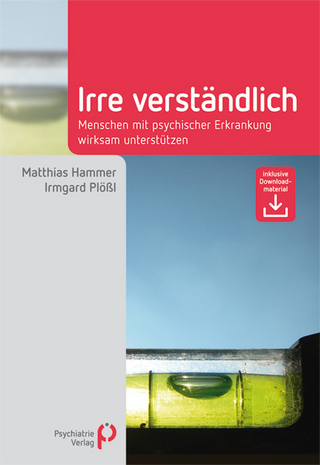
Contemporary Practice in Studio Art Therapy
Routledge (Verlag)
978-0-367-55893-2 (ISBN)
Contemporary Practice in Studio Art Therapy discovers where studio practice stands in the profession today and reflects on how changing social, political, and economic contexts have influenced its ethos and development.
This is the first UK volume devoted to studio art therapy, and the writers explore what is meant by a studio approach and how they are adapting art-based practices in radical new ways and settings. It comprises three parts – Part I: Frames of reference explores how particular social, cultural, and political contexts have led to the discourses within practice; Part II: Models of practice gives accounts of current studio art therapy practice, describing rationale for working methods and providing a resource for practitioners; Part III: Curating, exhibiting and archiving considers how the display and disposal of artworks, particularly relevant to studio approaches, may be thought about and implemented. The book includes chapters from North American authors who illustrate a trajectory of practice that has the potential to point to future developments.
The book will be essential reading for practitioners and students who are interested in taking a fresh perspective on art therapy and will be encouraged by new ways of thinking about the studio approach in today’s changing world.
Christopher Brown is an artist and art therapist currently in private practice after retiring from careers in mental health and higher education. Helen Omand is an artist and art therapist working in a therapeutic studio and as a lecturer at Goldsmiths, University of London.
Foreword: Tessa Dalley; Introduction, Christopher Brown & Helen Omand; PART I: FRAMES OF REFERENCE; 1. Historical perspectives, Christopher Brown & Helen Omand; 2. Literature review, Helen Omand & Dalaila Bumanglag; 3. How might studios help? Further thoughts on the significance of studios, Chris Wood; 4. The influential idea of the studio in the thinking and practice of U.S. art therapists, Lynn Kapitan; 5. Studio Upstairs: a working arts studio with a therapeutic concern – beginnings, Claire Manson, Douglas Gill, David Fried; 6. Art therapy in an art school: learning through studio practice, Philippa Brown; 7. Studio encounters: a personal view of shifting frames in art therapy, Christopher Brown; PART II: MODELS OF PRACTICE; 8. The Community Table: developing art therapy studios on, in-between and across borders, Bobby Lloyd & Miriam Usiskin; 9. Transitioning into visibility: exhibiting art from a therapeutic group for the intended purpose of knowledge sharing, education, social action and social change in the northern Canadian community, Zoe Armstrong; 10. The wall inside: painting with young offenders, Ben Wakeling; 11. Inside–outside: on being art focussed, Steve Pratt; 12. Making art alongside each other in a therapeutic art studio: exploring the space between us, Helen Omand and Patsy McMahon; 13. Terms of engagement: aspects of facilitating open art therapy groups for adults in a psychiatric inpatient setting, Annamaria Cavaliero; 14. Family residential art therapy studio model: in discussion with a parent and member of the open-studio group, Kristen Catchpole; PART III: CURATING, EXHIBITING, AND ARCHIVING; 15. Looking at the curation of art made by older adults in a median art therapy group, Kristina Page; 16. Exploring experiences of exhibiting artwork from a therapeutic art studio for refugees and asylum seekers, Jon Martyn;17. Private to public: exhibition in art therapy, Mary Andrus; 18. Making space: art, the studio, and exhibition in homelessness services, Simon Richardson; 19. Reliquary for the departed: archiving and collections, Christopher Brown & Helen Omand
| Erscheinungsdatum | 01.04.2022 |
|---|---|
| Zusatzinfo | 40 Halftones, black and white; 20 Illustrations, color; 20 Illustrations, black and white |
| Verlagsort | London |
| Sprache | englisch |
| Maße | 156 x 234 mm |
| Gewicht | 540 g |
| Themenwelt | Medizin / Pharmazie ► Medizinische Fachgebiete ► Psychiatrie / Psychotherapie |
| Medizin / Pharmazie ► Physiotherapie / Ergotherapie ► Ergotherapie | |
| ISBN-10 | 0-367-55893-9 / 0367558939 |
| ISBN-13 | 978-0-367-55893-2 / 9780367558932 |
| Zustand | Neuware |
| Informationen gemäß Produktsicherheitsverordnung (GPSR) | |
| Haben Sie eine Frage zum Produkt? |
aus dem Bereich


